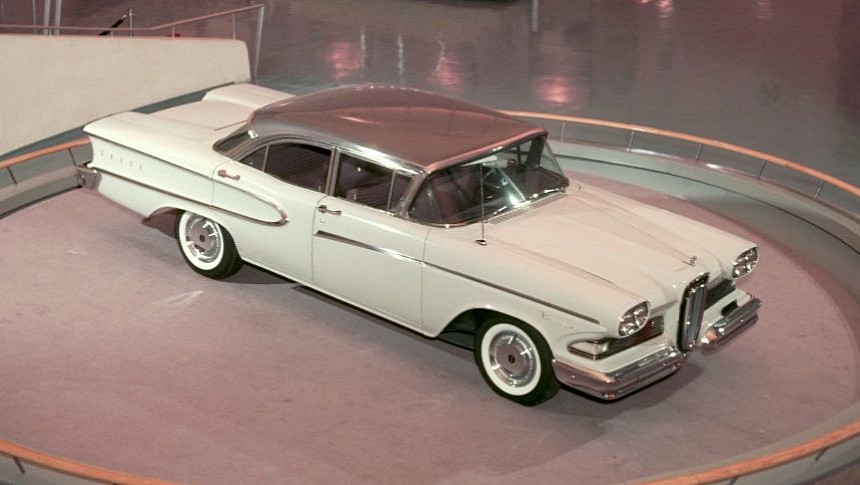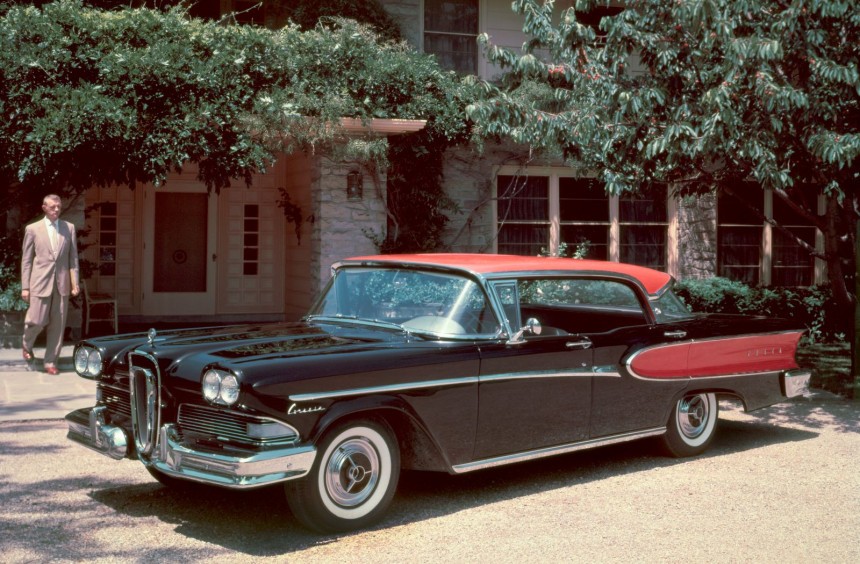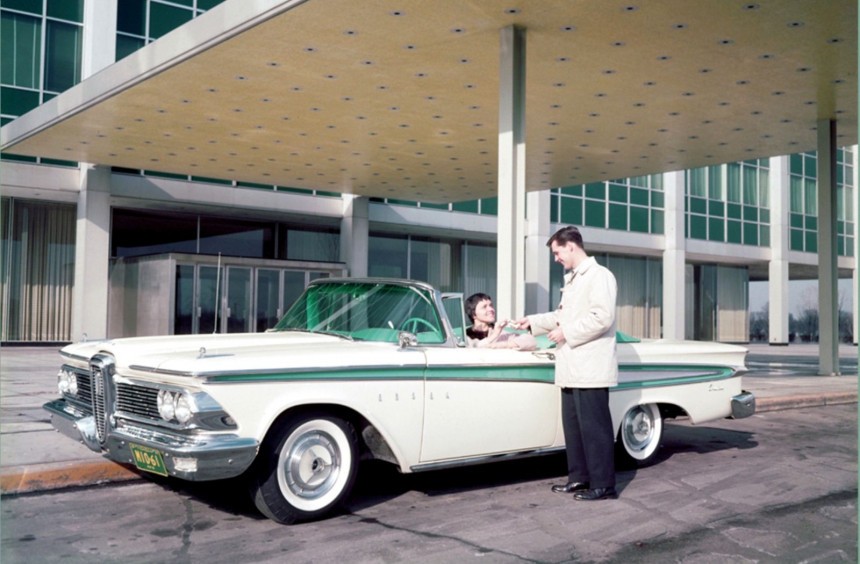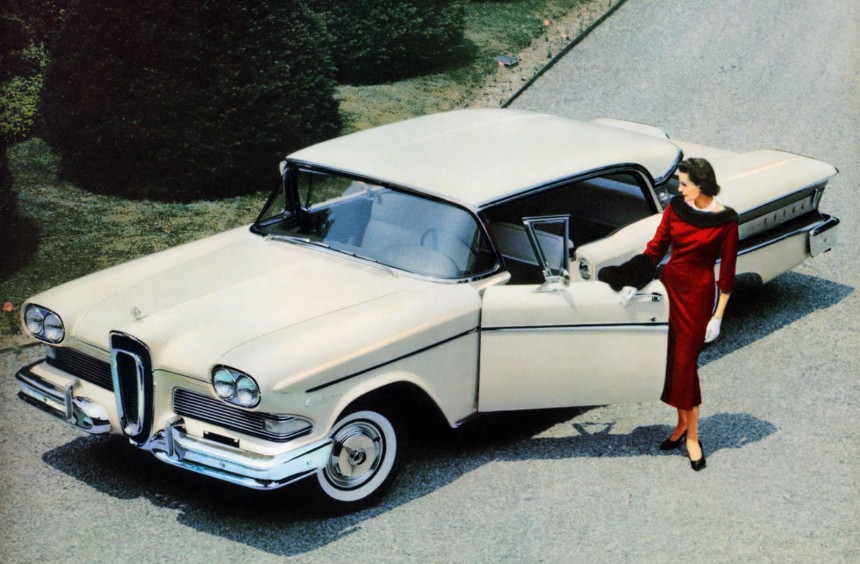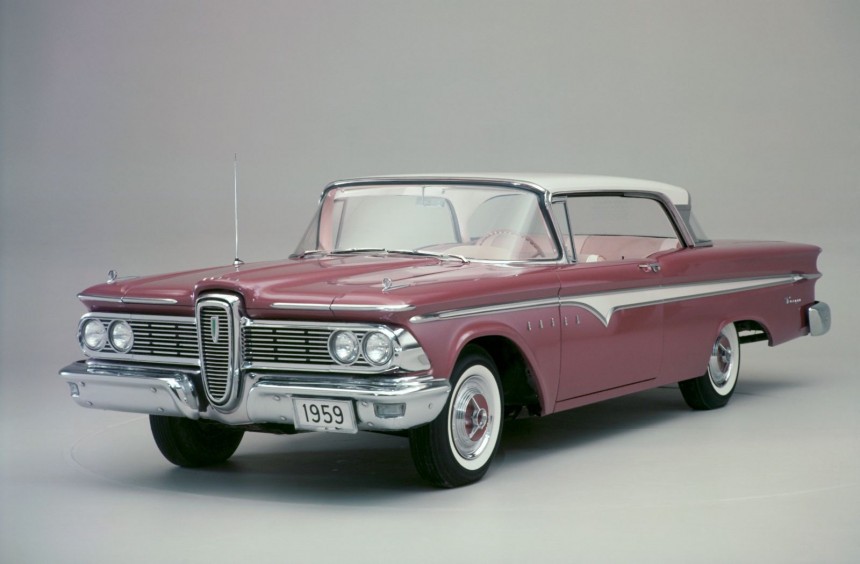It all started with the promise of an upscale brand that was set to deliver some of the most innovative cars in its price range, but only three years and about $250 million in losses later, the Edsel story was over.
Throughout its 120-year history, the Ford Motor Company has had a tremendous, arguably unrivaled impact on the automotive industry. As a matter of fact, it turned automobile manufacturing into a veritable industry by introducing the concept of assembly lines.
Despite its key role in the automotive industry and its involvement in aiding the US Army during the Second World War, Ford (like all other carmakers) struggled in the first years after the dreaded global conflict concluded.
In 1946, to ensure that the company would stay afloat, the Ford family hired a group of young, highly intelligent, and promising United States Army Air Forces veterans to take over critical managerial positions and breathe new life into the company. Nicknamed "Whiz Kids," the group immediately got to work to implement sophisticated management control systems and revitalize Ford's product lines.
Apart from planning the development of new and exciting vehicles, the new management team employed several important changes to the company's divisions.
The Continental nameplate was set to return as a separate flagship luxury brand meant to take on Cadillac. Lincoln, the division that used the Continental moniker for one of its models, was scheduled to drop on the brand scale and complete with Oldsmobile, Buick, and DeSoto. Furthermore, members of the new management team launched a large-scale market research program to gauge public interest in a new premium brand.
After about a decade of arduous marketing research, the decision was made to launch a new brand slotted between Lincoln/Continental and Mercury. Set to compete against Buick, Oldsmobile, Pontiac, Dodge, and DeSoto, the new brand was meant to offer the American buyer "the car of the future" at a mid-level price.
Executives spent years trying to find the perfect name for the new product, internally codenamed "E-car" (for experimental). Ultimately, the brand was christened Edsel, in honor of Edsel Ford, son of the company's founder, despite complaints from Edsel's son and CEO, Henry Ford II.
The new Ford brand, which was now part of the Lincoln-Mercury division (renamed Mercury-Edsel-Lincoln), was introduced to the public on September 4, 1957, during an event that was called E Day.
The event was followed by an unprecedented marketing campaign, including a television special called The Edsel Show, showcasing the brand's upcoming cars to the public.
For 1958, its inaugural model year, Edsel introduced a seven-model product line: Ranger, Pacer, Corsair, Citation, Roundup, Villager, and Bermuda.
The Ranger and Pacer sedans were the lower-end models closely related to the Ford Fairlane. The mid-level and top-of-the-line sedans (also available as convertibles) were the Corsair and Citation, which shared many components with the Mercury Monterey and Montclair.
The remaining three models, the two-door Roundup (base), four-door Villager (mid), and four-door Bermuda (top), were all station wagons based on similar 116-inch (290 cm) wheelbase Ford offerings.
Sold through a new, nationwide network of 1,187 dealerships under the motto "It acts the way it looks, but it doesn't cost that much," the Edsels introduced what Ford called an elegant mix of futuristic design cues as well as a host of innovative features. These included an aircraft-inspired rolling-dome speedometer, dashboard-mounted warning lights, or the Teletouch shifting system that used buttons mounted on the steering wheel hub.
Despite these innovations and the parent corporation's marketing efforts, the public didn't quite embrace the new brand. Its name was a tough pill to swallow, sounding too old-fashioned even for that era. Moreover, the so-called futuristically-elegant design wasn't all that appealing (particularly the narrow vertical grille), with many calling Edsel a revived version of LaSalle (the defunct GM brand). Even the build quality was criticized since many imperfections plagued almost every Edsel.
To make matters worse, the country's economy went through a major recession that year, devastatingly affecting medium-priced cars.
Once the 1958 model year was over, Edsel's overall sales figures totaled 63,110 units in the United States and 4,935 in Canada. Although those figures were certainly below expectations, they were the second largest for a new American car brand, exceeded only by DeSotto nearly three decades earlier.
In response to the lackluster sales, the parent corporation rearranged Edsel's market position, slotting it between Mercury and Ford.
For the 1959 model year, the Citation, Pacer, and Roundup were discontinued. In addition, the highly-criticized exterior design of the remaining models got a thorough refresh, and features deemed too outlandish, like the Teletouch system, were withdrawn, but, as it turned out, this didn't help.
After Edsel's second model year concluded, the brand's sales dropped to 44,891 vehicles sold in the US and 2,505 across the border in Canada.
By 1960, the Edsel model lineup was cut down to the Ranger and Villager. Both models received yet another thorough redesign that, among other changes, eliminated the controversial vertical grille, but at this point, the cars looked nothing more than rebadged Fords.
That year, over 2,800 Edsels were sold in the US and Canada, leading Ford to discontinue the brand altogether.
Over the course of three full model years, Edsel managed to sell 118,287 cars. That was abysmal, considering the upcoming Mustang project would produce and sell 121,538 vehicles in just half of the 1964 model year.
Multiple theories have attempted to explain why Edsel failed so spectacularly. Some say its rapid demise resulted from the questionable design. Others blame the financial turmoil of the era, as well as internal disputes within Ford.
Regardless of the exact reason (or combination of reasons), the Edsel experiment amounted to losses of over $350 million ($3,6 billion today) for Ford.
Today, the Edsel story remains the best example of how not to launch a new car brand. However, the once-dreadful cars it spawned have
become highly (and surprisingly) collectible. Despite their value dropping significantly during the first decade after the brand was discontinued, well-kept, low-mileage models that have survived (particularly those from 1958 and 1959) are now being auctioned off for more than $40,000, and their value continues to rise steadily.
If you want to learn more about the brand, we recommend the YouTube video below by Ed's Auto Reviews.
Despite its key role in the automotive industry and its involvement in aiding the US Army during the Second World War, Ford (like all other carmakers) struggled in the first years after the dreaded global conflict concluded.
In 1946, to ensure that the company would stay afloat, the Ford family hired a group of young, highly intelligent, and promising United States Army Air Forces veterans to take over critical managerial positions and breathe new life into the company. Nicknamed "Whiz Kids," the group immediately got to work to implement sophisticated management control systems and revitalize Ford's product lines.
Apart from planning the development of new and exciting vehicles, the new management team employed several important changes to the company's divisions.
The Continental nameplate was set to return as a separate flagship luxury brand meant to take on Cadillac. Lincoln, the division that used the Continental moniker for one of its models, was scheduled to drop on the brand scale and complete with Oldsmobile, Buick, and DeSoto. Furthermore, members of the new management team launched a large-scale market research program to gauge public interest in a new premium brand.
The birth of the Edsel brand
Executives spent years trying to find the perfect name for the new product, internally codenamed "E-car" (for experimental). Ultimately, the brand was christened Edsel, in honor of Edsel Ford, son of the company's founder, despite complaints from Edsel's son and CEO, Henry Ford II.
The new Ford brand, which was now part of the Lincoln-Mercury division (renamed Mercury-Edsel-Lincoln), was introduced to the public on September 4, 1957, during an event that was called E Day.
The event was followed by an unprecedented marketing campaign, including a television special called The Edsel Show, showcasing the brand's upcoming cars to the public.
The first model year
The Ranger and Pacer sedans were the lower-end models closely related to the Ford Fairlane. The mid-level and top-of-the-line sedans (also available as convertibles) were the Corsair and Citation, which shared many components with the Mercury Monterey and Montclair.
The remaining three models, the two-door Roundup (base), four-door Villager (mid), and four-door Bermuda (top), were all station wagons based on similar 116-inch (290 cm) wheelbase Ford offerings.
Sold through a new, nationwide network of 1,187 dealerships under the motto "It acts the way it looks, but it doesn't cost that much," the Edsels introduced what Ford called an elegant mix of futuristic design cues as well as a host of innovative features. These included an aircraft-inspired rolling-dome speedometer, dashboard-mounted warning lights, or the Teletouch shifting system that used buttons mounted on the steering wheel hub.
Off to a rocky start
To make matters worse, the country's economy went through a major recession that year, devastatingly affecting medium-priced cars.
Once the 1958 model year was over, Edsel's overall sales figures totaled 63,110 units in the United States and 4,935 in Canada. Although those figures were certainly below expectations, they were the second largest for a new American car brand, exceeded only by DeSotto nearly three decades earlier.
From bad to worse
For the 1959 model year, the Citation, Pacer, and Roundup were discontinued. In addition, the highly-criticized exterior design of the remaining models got a thorough refresh, and features deemed too outlandish, like the Teletouch system, were withdrawn, but, as it turned out, this didn't help.
After Edsel's second model year concluded, the brand's sales dropped to 44,891 vehicles sold in the US and 2,505 across the border in Canada.
By 1960, the Edsel model lineup was cut down to the Ranger and Villager. Both models received yet another thorough redesign that, among other changes, eliminated the controversial vertical grille, but at this point, the cars looked nothing more than rebadged Fords.
That year, over 2,800 Edsels were sold in the US and Canada, leading Ford to discontinue the brand altogether.
A failure of epic proportions
Multiple theories have attempted to explain why Edsel failed so spectacularly. Some say its rapid demise resulted from the questionable design. Others blame the financial turmoil of the era, as well as internal disputes within Ford.
Regardless of the exact reason (or combination of reasons), the Edsel experiment amounted to losses of over $350 million ($3,6 billion today) for Ford.
Today, the Edsel story remains the best example of how not to launch a new car brand. However, the once-dreadful cars it spawned have
become highly (and surprisingly) collectible. Despite their value dropping significantly during the first decade after the brand was discontinued, well-kept, low-mileage models that have survived (particularly those from 1958 and 1959) are now being auctioned off for more than $40,000, and their value continues to rise steadily.
If you want to learn more about the brand, we recommend the YouTube video below by Ed's Auto Reviews.
